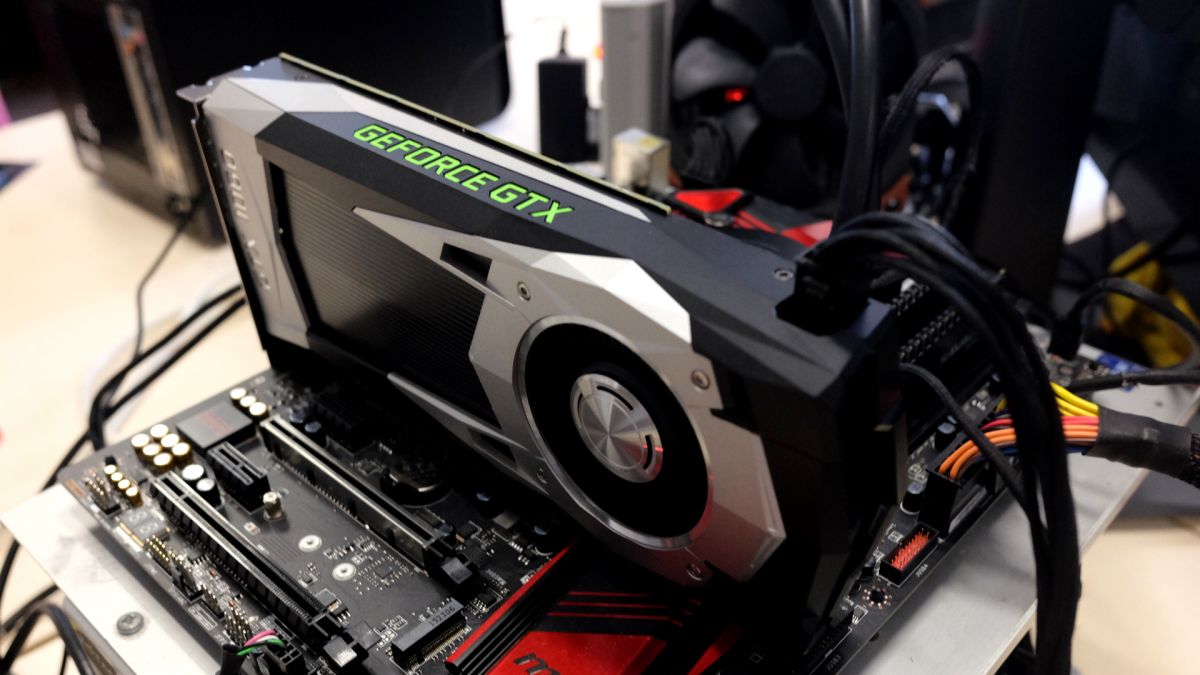
Introduction and specs
Oh what a joyous time to be a PC enthusiast. This year is set to be the largest single advancement in manufacturing processes and performance increases since the start of Intel’s 32nm Nehalem processor line way back in 2009.
Let’s just take a step back and analyze this for a second. In the last 12 months we’ve seen the Z170 chipset, Skylake, Broadwell-E, Pascal’s GTX 1080 and 1070, AMD’s Polaris RX 480 and now, finally Nvidia’s answer to the red team’s mid-range booty kicker, the GTX 1060.
Let’s face the facts. No matter how you look at it, both Nvidia’s and AMD’s arsenals stem from the mid-range. The flagships gain the prestige, but it’s the mid-range that wins the war.

AMD’s RX 480 is currently dominating that part of the market. Its latest card is priced aggressively and sits comfortably in performance terms between the GTX 970 and GTX 980. But is it priced aggressively enough to stem off the tidal wave that is the GTX 1060?
Prices for Nvidia’s latest card start at $249 (around AUS$332) over in the US, while you can pick one up in the UK for north of £240. Click here for more on where to buy the Nvidia GTX 1060, and how much it costs.
Pascal power
So then, what do we know about this new mid-range Titan? Well, it’s still based off of Pascal’s 16nm FinFET manufacturing process, albeit on the GP106 processor as opposed to the GTX 1080 and 1070’s GP104.
It comes in either 6GB or 3GB variants, at the standard 8GB/s of bandwidth on a 192-bit bus, features an impressive 1,280 CUDA cores, 80 Texture Units and 48 ROPs. Couple that with an increase of 1.46 billion transistors, a 120 watt TDP and a base spec base clock (before GPU boost gets its hands on it) of 1708 MHz and we’re on to a winner.
Hold on a moment…
Everything isn’t rosy with the GTX 1060, however. There’s one problem in particular, and is it a biggy: SLI. While opening up the beautifully designed Nvidia packaging, one thing immediately stood out to us – the lack of the usual SLI fingers littering the top of the card.
Now, admittedly SLI isn’t the be all and end all of a GPU, especially one at this price point. However, for those looking to boost their graphical performance a couple of years later down the line, the severe lack of an SLI bridge limits you to DX12 titles supported by both Microsoft and the game developers via a nifty piece of technology called MDA mode or LDA explicit. Although by no means is that a guarantee of actual support.
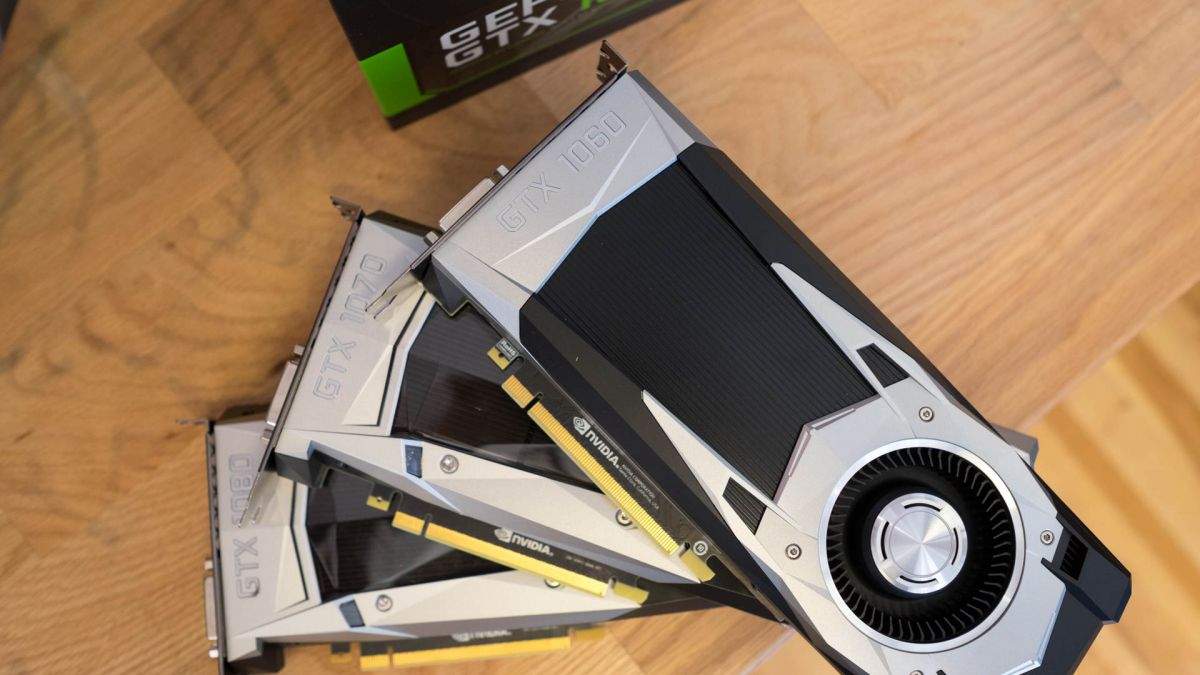
This actually then brings up quite the conundrum when it comes to how exactly you take your upgrade path. Historically, we’ve always suggested (if you’re buying long term for now) that you should always opt for a more powerful GPU rather than two lower cost cards. SLI is great when it works, but it’s exactly that – it has to work – and with a lack of SLI profiles for games on launch, it’s not always a compelling argument to grab two unless you’re talking about a top-tier PC gaming monster rig.
However, if you’re looking to pick up an additional card later down the line when prices drop and a new generation of cards pop, it’s just not going to be possible anymore. The alternative to this conundrum is to opt for the more higher-end GTX 1070, which retains those SLI fingers if that’s your jam.
Or, optionally you could go for AMD’s RX 480, which comes at a slightly cheaper price point, and with performance set succinctly between the GTX 980 and 970.
Specs and performance
So, SLI has gone out of the window then. But how does the GTX 1060 perform on its own? Does it match up to Nvidia’s statement, can it outperform the prestige of the GTX 980? In our testing the answer is a resounding yes. We snuck in the 6GB Founder’s Edition into the lab for testing, and it was impressive.
From the get go this little beauty racked up an impressive final GPU clock speed of 1911 MHz thanks to GPU Boost 2.0, 203 MHz higher than Nvidia’s conservative estimate. In our 1080p testing we saw average frame rates ranging from 36 fps to 38 fps in Total War: Attila, Rise of the Tomb Raider and Ashes of the Singularity, while both Far Cry Primal and The Division scored well above that 60 fps sweet spot.
The GTX 980 on the other hand did average a little higher at this resolution, netting a respectable 38 – 41 average frames per second in Total War, Tomb Raider and Ashes, with one frame lower results in both The Division and Far Cry Primal.
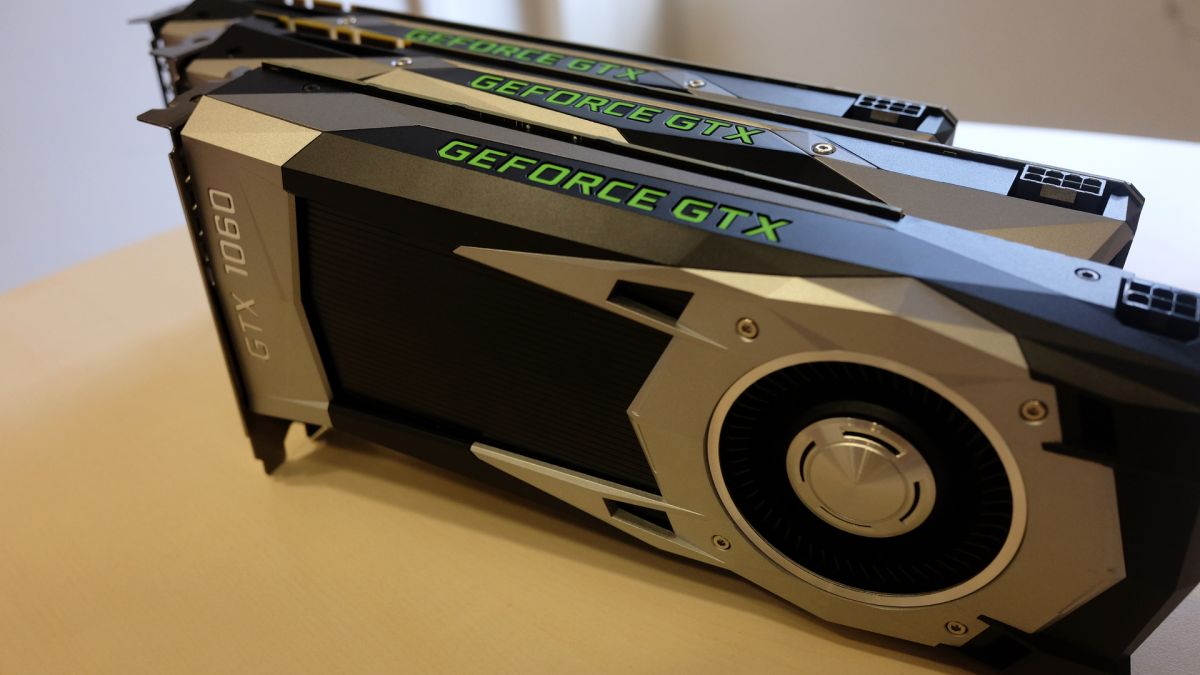
Quad damage
At 1440p it’s a similar story with both the GTX 1060 and 980 trading blows all day long. Far Cry Primal and The Division scoring 45 and 41 average frames per second respectively, and 23 to 30 frames per second in Total War, Tomb Raider and Ashes of the Singularity at DX12.
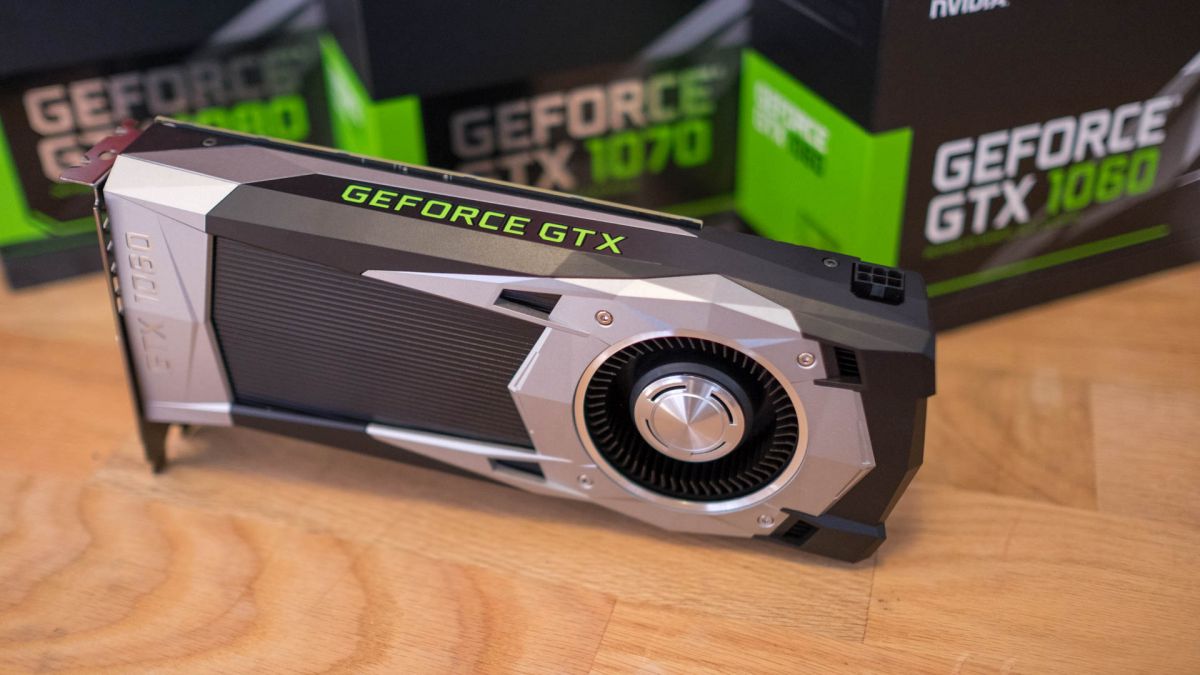
It’s important to bear in mind at this point that all of our titles are benchmarked on the absolute maximum settings possible. Attila is notorious for being particularly graphically intensive, alongside Rise of the Tomb Raider. Couple that with an overall lower system power draw of 225 watts versus the GTX 980’s 237 and it almost seems like an absolute victory. Almost.
Overclocking and thermals
So then, the Founder’s Edition still follows that traditional blower style shroud that most reference cards are so fond of. This one in particular is somewhat of a stripped down variant of the more prestigious GTX 1070+ versions. Although, at least it isn’t as black as the previous reference x60 series cards. It’s quiet even at higher loads, considerably more than the competition, keeps the card cool, and helps ensure GPU boost has the leverage to increase clock speeds without worry.
Considering the card only has a 120W TDP and a single six pin the overall overclocking was an enjoyable experience. Impressively like the rest of its Pascalian brothers the GTX 1060 is one hell of an overclocker.
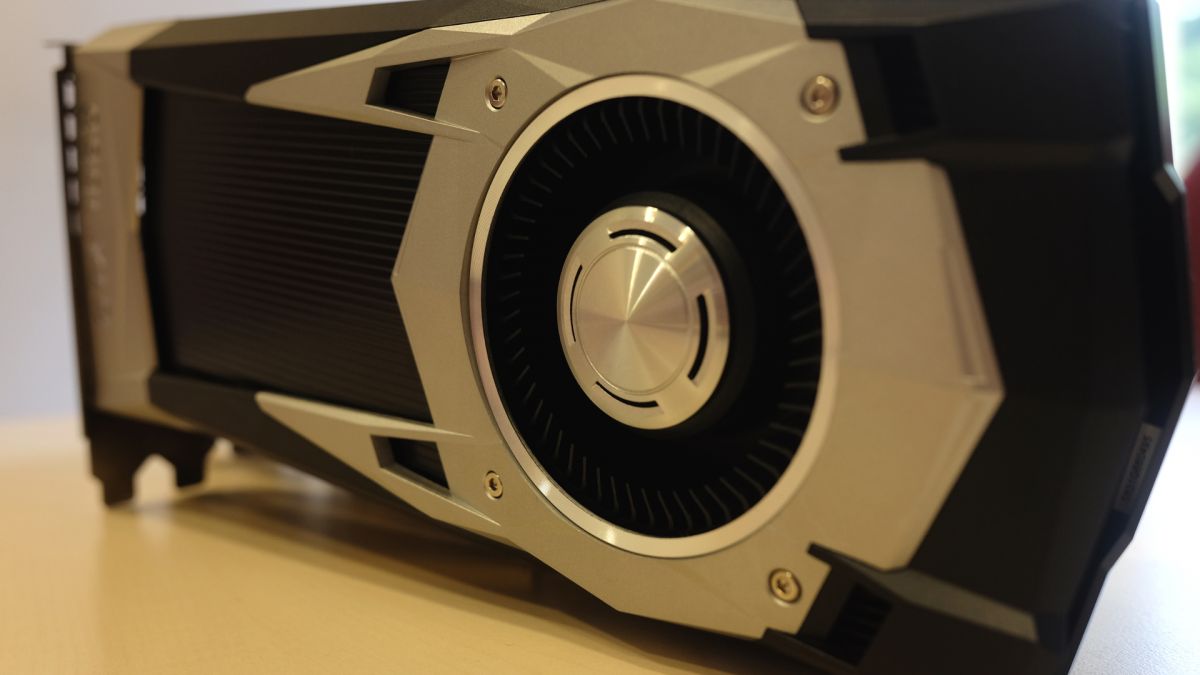
With a 50% increase in voltage, plus 250 MHz on the GPU, and 325 MHz on the memory we managed a final core clock of 2,151 MHz on the core and 8.664 MHz on the memory. With aftermarket cards fast approaching, it’s likely we’ll see improvements on that, and the GPU boost scores, which are already remarkably high in contrast to the last generation.
If Pascal has shown us anything, it’s that we’re finally hitting that 2 GHz mark for graphics processors permanently, certainly for team green. Overall this increases our Firestrike score by just shy of 1,100 points, which is the equivalent of upgrading from Intel Core i3 to a Core i5, or the midway point between a GTX 1070 and 1080. Is it a huge performance gain? Not immensely, you can expect to gain around 4 to 5 fps depending on the title, but free performance is free, so why wouldn’t you?
Verdict
Ultimately the GTX 1060 is an incredible card, and for price to performance it’s one of Nvidia’s best solutions we’ve seen to date. Not quite as value oriented as AMD’s RX 480, but then it’s positioned at a slightly higher end of the market place than its 14nm competition.
We liked
The GTX 1060 comes packed with features in the form of Ansel, Simultaneous Multi-Projection, and Nvidia’s VR Works. Add that to the impressive improvement of performance per watt, astonishing price point and solid overclocking and Nvidia truly are onto a winner here.
We disliked
If we’re evaluating the GPU and architecture alone this card would be exceptional, unfortunately this is slightly marred by that Founder’s Edition bump up price and lack of SLI compatibility.
Final verdict
What is fantastic about this card is the leaps and bounds we’ve seen made from both sides. Sub 20nm has proven to be a winner in an era where Intel’s die shrinks prove a little less thrilling. The SLI issue is a problem for those looking to improve performance later down the line, although an understandable move, and no doubt one that reduces cost.
As always the Founder’s Edition still has that high price tag, but the cooler is well-rounded, looks quite classy and all in all this is a card perfectly suited for high end 1080p gaming. If you’re on any of Kepler series cards, this would be the ideal upgrade.
Source: techradar.com










































LOWER performance than AMD 480 in fact, but more EXPENSIVE. This card is unsaleable.
In newer DX12 games it's a real ripoff from nVidia, probably on the same level like AMD 470.
Don't forget 3D Mark "DX12" is an nVidia paid ripoff, just see REAL performance tests (only proper DX12 games = without nVidia code "optimization" like in DX11).
Dude you sound like a delusional AMD fanboy. Check the benchmarks the GTX1060 wins in most of them
Why? In DX12 480 is almost like 1070, dirty nVidia game is hopefully over with DX12 😉
Just facts, liar, nVidia paid as usual?
Nvidia is unsaleable for DX12 asynchronous shaders (all the new games) = disastrous performance benefit, almost zero = outdated architecture for at least 2 years, just facts, kiddie
And under Vulcan is nVidia just a joke.
LOL 8 out of 10 games tested run faster with a GTX1060 so it's definitely the opposite of what you say, The RX480 has the lower performance. Also in Tomb Raider DX12 it runs faster from RX480 so in DX12 it depends the game
Stop lying to yourself the GTX1060 is around 5%-10% faster from RX480 and with much lower power consumption. Also in VR tests the GTX1060 is again faster from RX480
Pretty open and shut case for now. A 8GB RX480 costs $319 to $359 here in Canada…. AS we speak GTX 1060's are going for $359 to get this… $458.99 !!!! You can't justify that kind of price difference for near identical performance, and power savings that amount 75 cents over the course of a year. As it stands now Nvidia rules the mid range and high end market while AMD has the Entry level to low mid range level on lock down. This card just doesn't have a real space in the market. (SLI could have made this one of the best setups of the century.. BUT NVIDIA can't cannibalize its 1070 and 1080 sales.)
FINALLY we have some proper competition in the market place ! Maybe we can see a real price drop in cards next !
Keep yapping troll. All i see in benchmarks is that the 1060 is better than the 480 in almost every game, not to mention that a 1060 from Asus costs 299 euro here, exactly as much as a 480. So the 1060 is better in power, consumption, heat dispersion, noise, drivers and doesn't fry boards. The 1060 is a clear victor for me and the 480 is unsaleable.
No, you lie, just remove DX11 nVidia crippled games AMD the winner is almost AMD 470 over 1060;)
For future 1060 is a money waste.
SLI… in a couple of years down the line, you'll buy the next mainstream card that comes out, or you'll buy the new 1070+ (or whatever) that has even more VR support. missing SLI isn't such a big deal for this card.